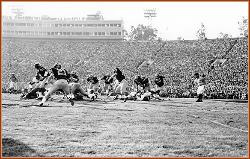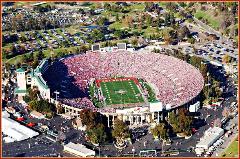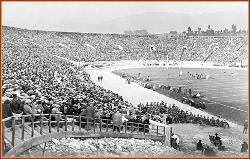



Cleveland's Municipal Stadium "The Mistake by the Lake"
Up to 86,000 for a baseball game, what could be wrong with a stadium that can hold
that many? Possibly one of the ugliest ballparks, this stadium lacked character, good
views and winning. The nickname "Mistake by the Lake" was a great fit.
History
Constructed on reclaimed land on the city's lakefront, the Mistake was completed in
1931; at that time it boasted the largest individual seating capacity (78,189) of any
outdoor arena in the world. But as many as 86,000 were able to make it into the
stadium for some games. A municipal stadium was first discussed in the early 1900s as
a site for high school athletic contests. City Manager William R. Hopkins raised the
issue again in 1923, and in 1928 Cleveland voters approved a $2.5 million bond issue
to support construction. Designed by Osborn Engineering Co. and the architectural firm
of Walker AND Weeks, the stadium was completed on July 1, 1931, and 2 days later a
championship boxing match between Max Schmeling and Young Stribling was held
there. The Cleveland Indians played their first game in the park on July 31, 1932;
however, the team continued to split its home season between the stadium and League
Park until 1947, when it finally moved its entire home season to the stadium. During
that year, professional football also came to the stadium. By the 1960s, Cleveland
Browns football became the major attraction in terms of overall attendance, even
though they only played 6 games a year, in comparison to the Indian's 76.
The stadium will always be remembered for being home to the Browns and their dog
pound, and its role in the memorable movie Major League. Its role as being home to
Indians for over 60 years will be overshadowed because of its immediate success after
moving to Jacob's Field. It only took a couple years in the new stadium to have played
more playoff games at the Jake than at the Mistake.










